Hitchhiking in Tasmania: Part One
The ferry arrived in Devonport just after 7am. The sun had risen, but it was grey, misty, and the air was a little chilly. The reality of my situation dawned on me for a moment; I was in an unknown place, with a dwindling bank balance, carrying my possessions in a heavy backpack with no mode of transport, on a hastily concocted scheme to hitchhike to the best nature spots on this island, with a loose aim of finding casual work. Nevertheless, rather than let self-doubt take over, I went on my merry way.

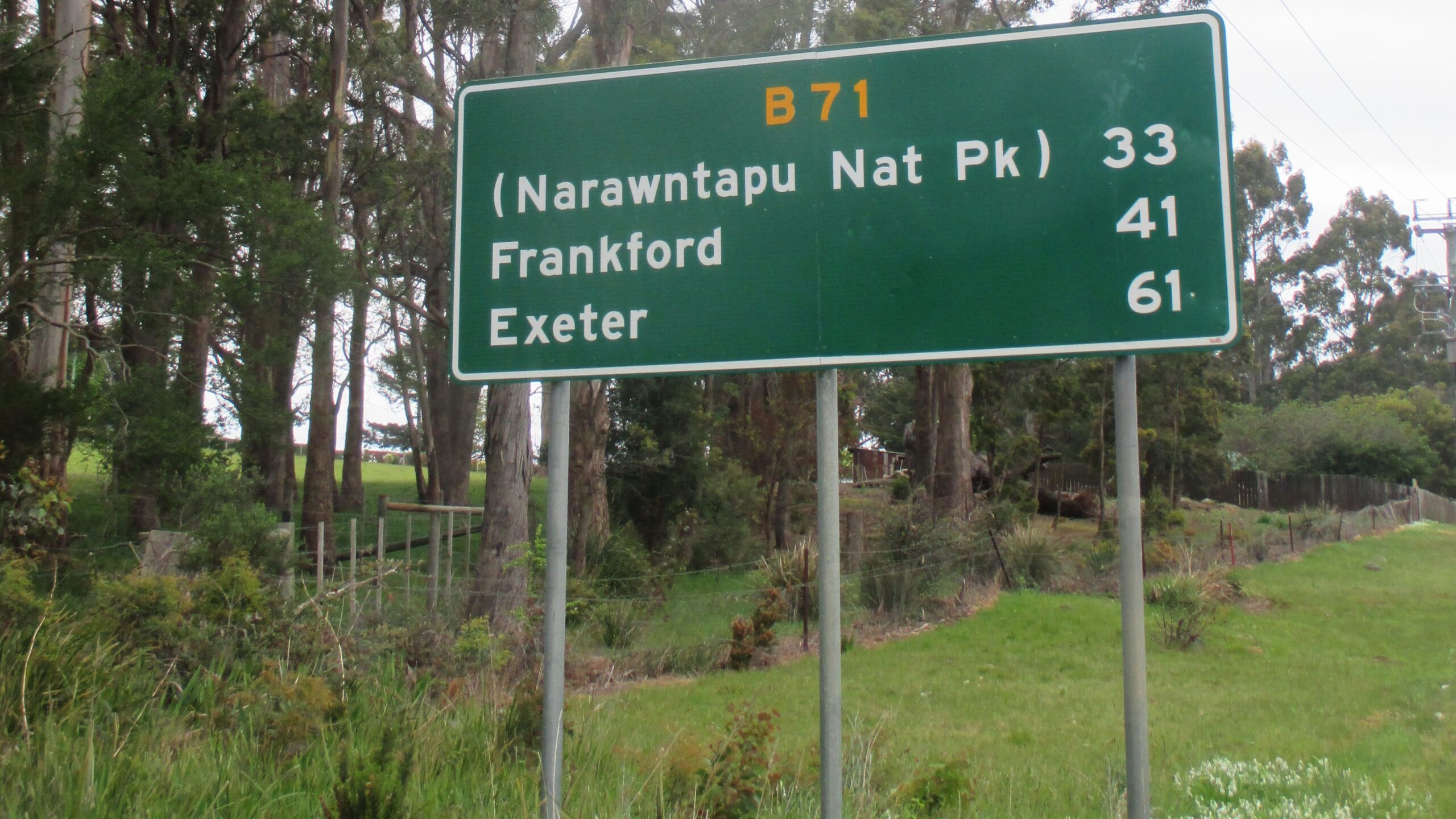
Setting off
I headed East from the port onto a road that would take me to first destination; Narawntapu National Park. After a slow start, things back to pick up, quite literally, and I got three rides in quick succession across a period of two hours. That took me to the outskirts of the park. Traffic into the park was quiet on that weekday morning, so I walked most of the 14 km along the road through the forest. I wasn’t accustomed to carrying my large backpack for long distances, so the walk was challenging, particularly as the sun was now shining. And, yet, it was rewarding in the sense it felt like a physical challenge. Also, being away from cars, I was doing what I came to do – exploring nature.
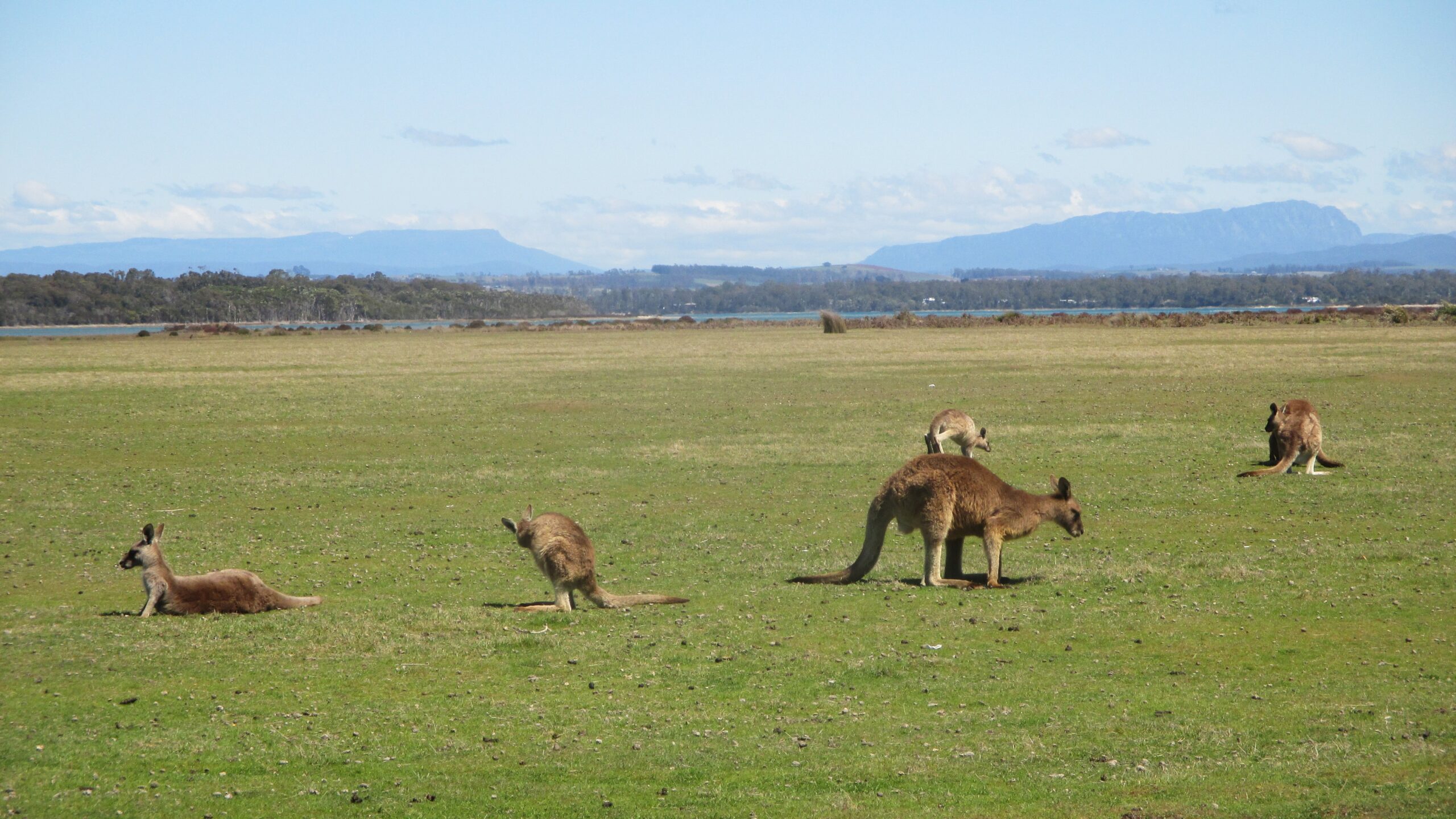
Narawntapu
The bulk of the weight on my back was water. Unsure of how accessible clean, fresh supply would be on my path, I carried up to five litres. I carried a portable cooker, two small pots, and food consisted largely of rice, couscous, porridge oats, vegetables, nuts, and some snacks. I also carried clothing I deemed essential only, and a lightweight tent.
The walk was worth the effort. Narawntapu is an extraordinary combination of forest, grassland, bush, beach, and sea. As the forest subsides, the path opened into a large grassy area, with the campsite in the middle. Beyond that, accessed through a sand dune, is a curved, sandy bay, with beautiful, blue, clear water. I came to realise that Tasmania has numerous pristine beaches to offer.
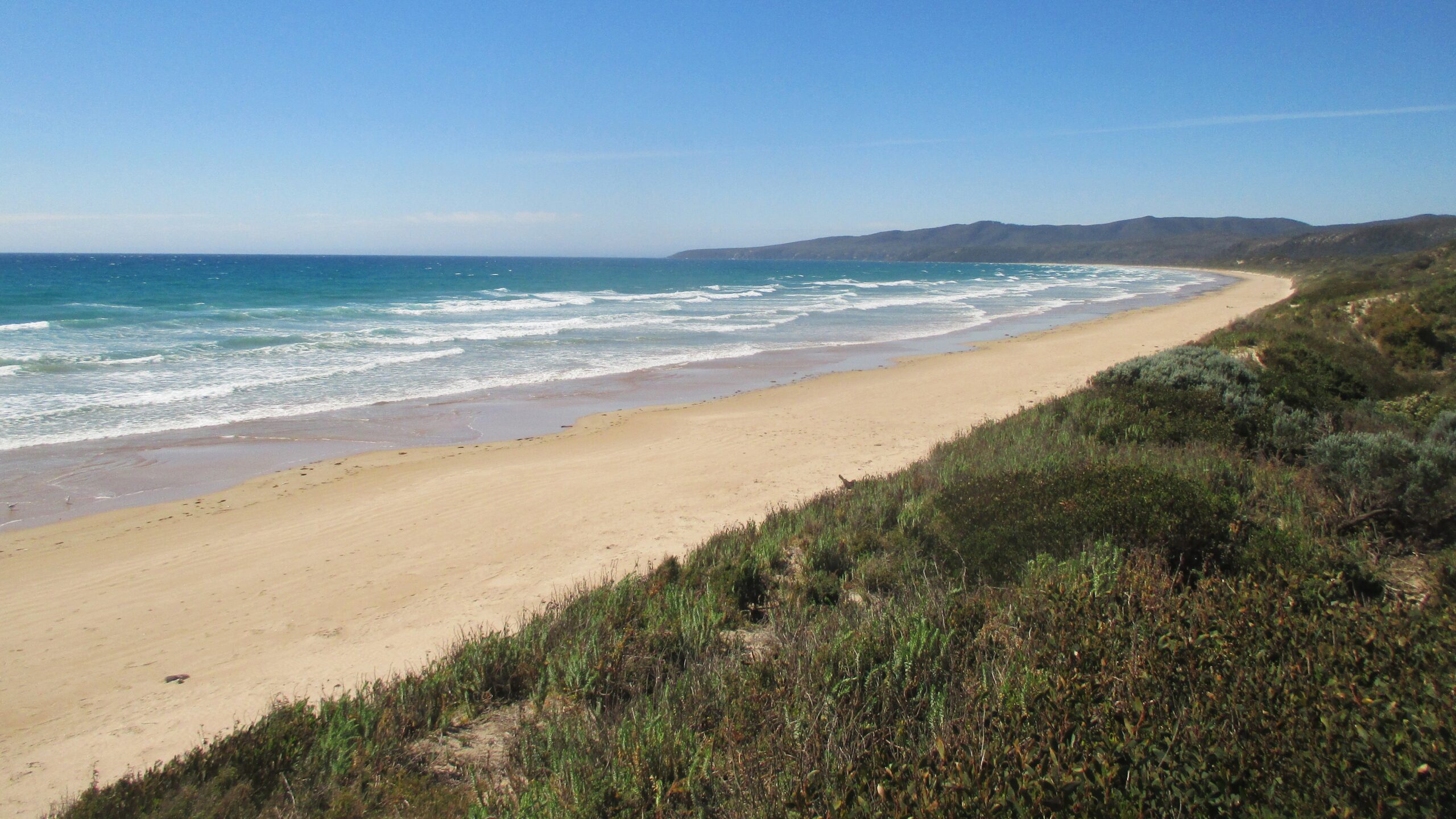
Wildlife
By the campsite, a large mob of grey kangaroos were gathered across the plain. After setting up camp, I went on a walk on the grass, which prompted the kangaroos to bounce away in all directions – quite a sight. In the evening, dozens of wallabies and pademelons came out. Despite their smaller size, they were more comfortable around me and acted as if I wasn’t there.
After dark, another, more elusive animal emerged. Wombats, leaving their homes in the ground, came to graze around the campsite. In peak seasons, the park might be busy. But on this night, there was only one other tent up, and I felt immersed in the wilderness of Tasmania.
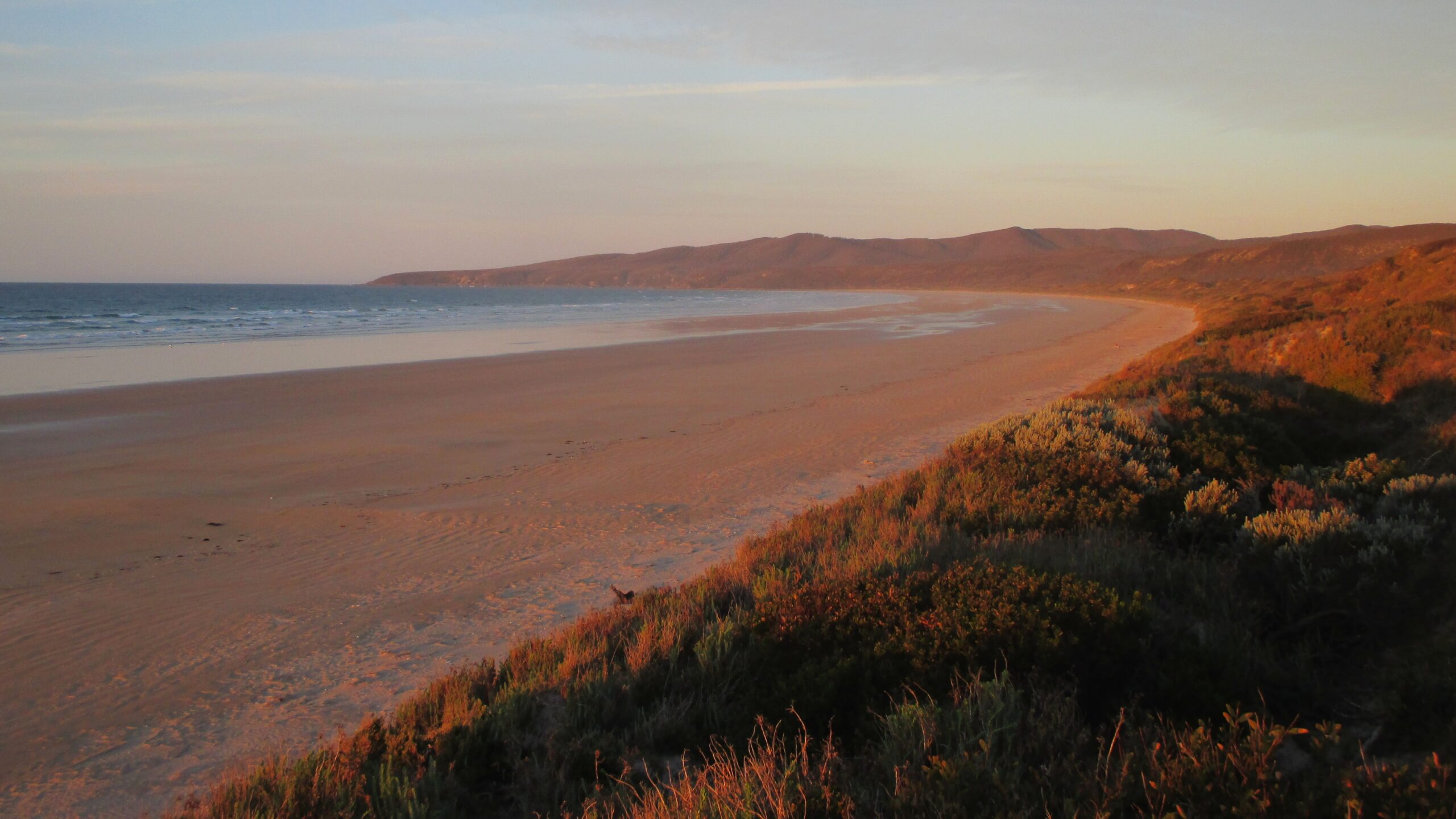
Launceston
The next stop was Launceston. Luckily, I landed a ride out of the park, to the main road. From there, I didn’t have to wait long for another couple of rides – the first of which was in rather dodgy-looking old banger, with a nice driver, but the car couldn’t have been roadworthy – and I reached my destination.
I had planned to stay just one night in Launceston, so I spent the day wandering around town to see what it had to offer. At City Park there’s a troop of Japanese macaques, also known as Snow Monkeys, that supposedly carry on Launceston tradition of housing exotic animals. There’s also a nice walking route along Cataract Gorge, beneath steep cliffs above a powerful river, not far from the centre.
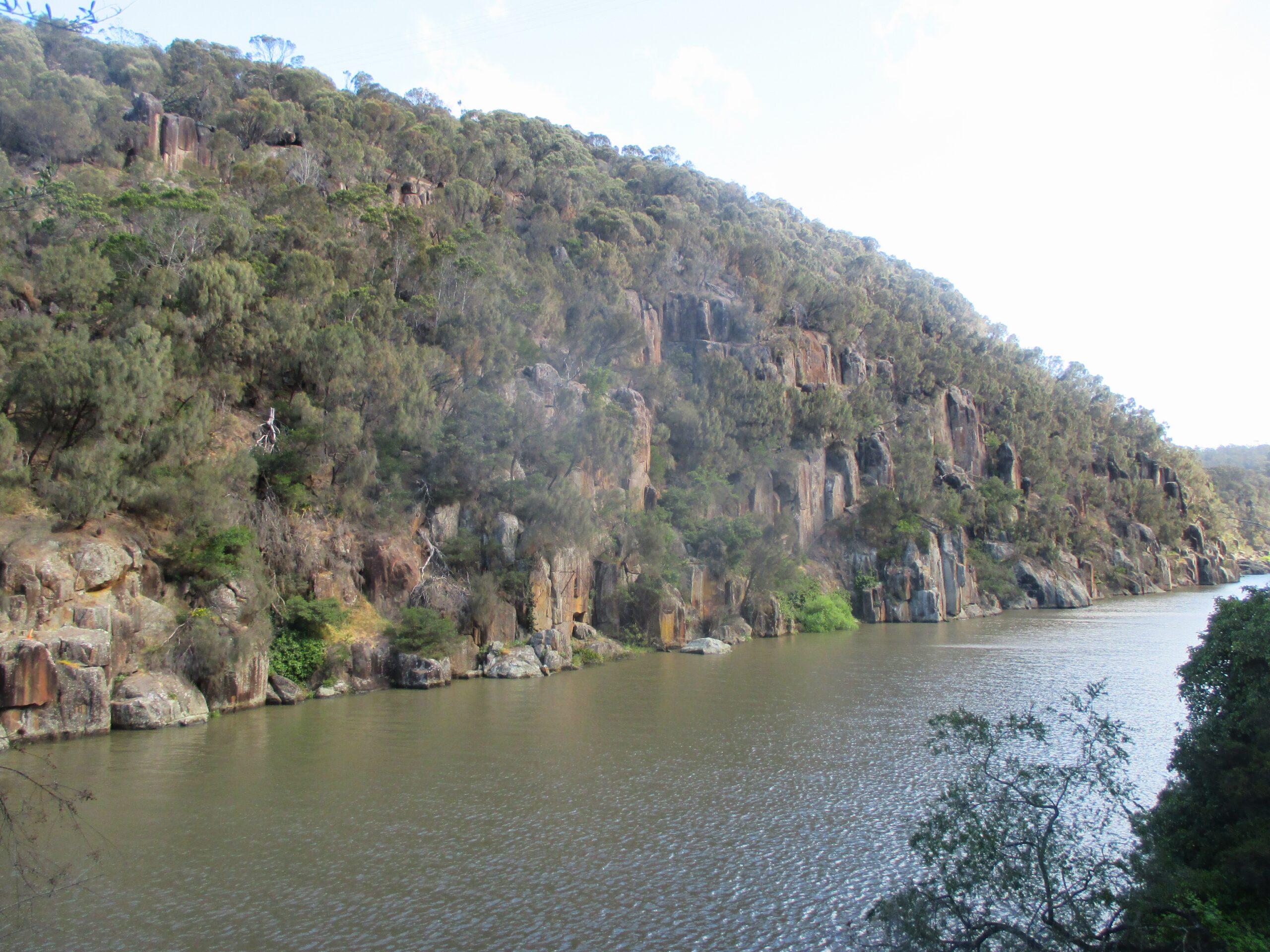
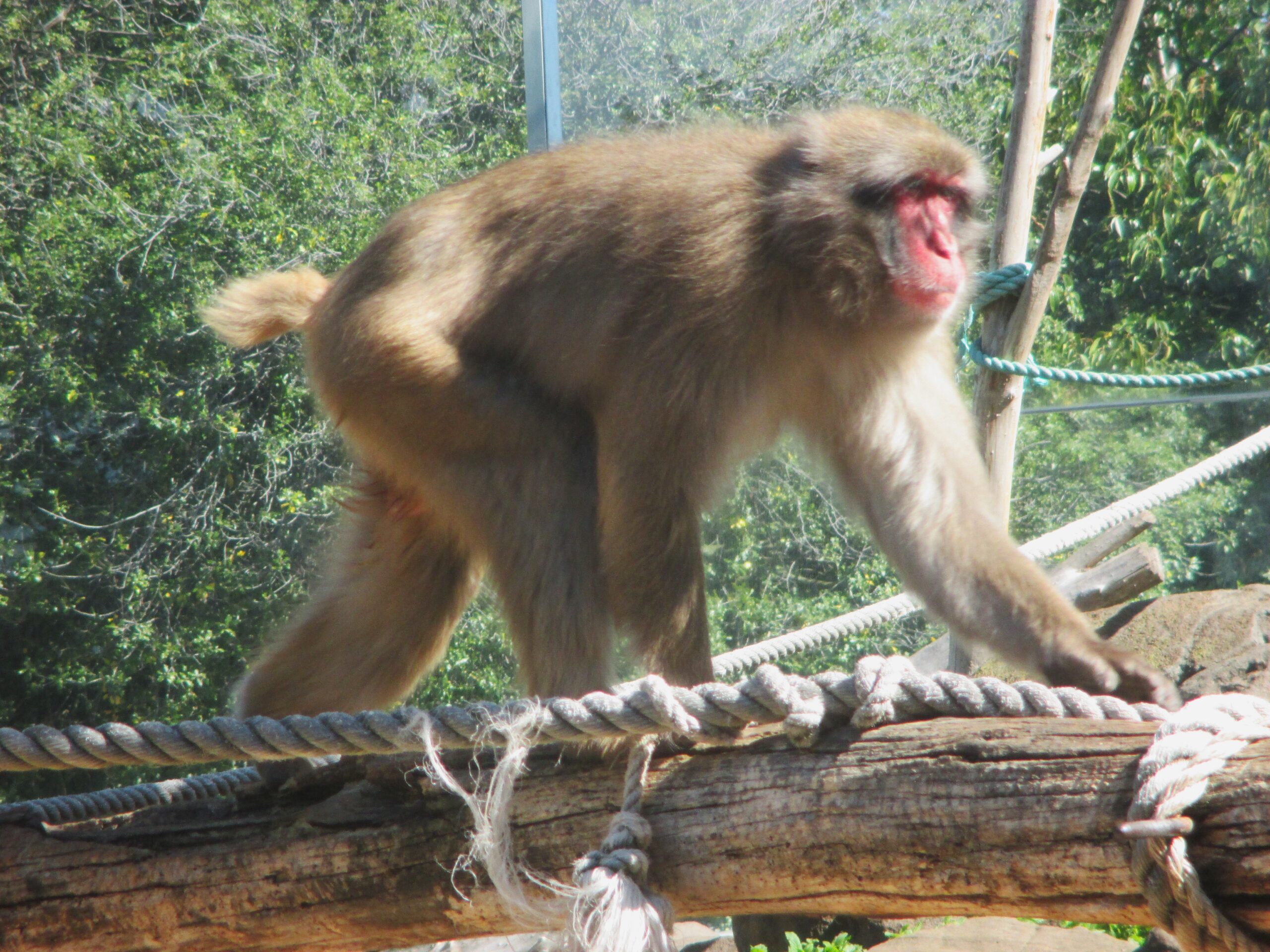
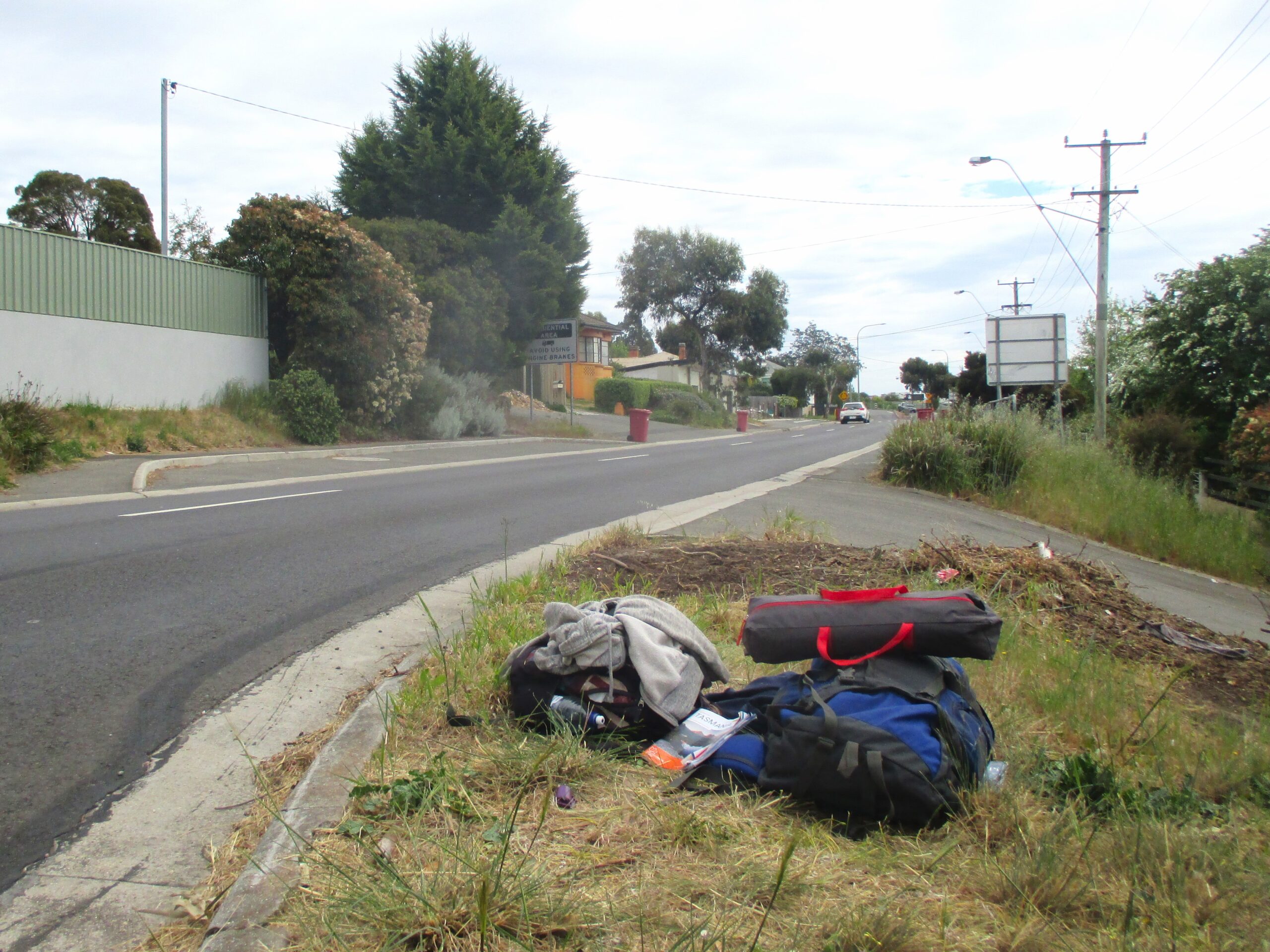
The failed attempt
I stayed in Launceston Backpackers for a night, before attempting to reach Ben Lomond and Mount William National Park the next morning. It was here that I encountered my first ever failure while hitchhiking. I waited for over three hours without receiving a single offer of a lift. I decided it wasn’t my day, walked back into town, and changed plans.
I had another night in town, before I headed on my new route – south, then east, towards the Bay of Fires on the east coast of Tasmania. This day, I didn’t have to wait long for rides. The most memorable of which trip was from a sweet elderly couple, who had been married for almost 60 years. They kindly provided tips for finding work, information about the local area, including how wildfires affect Tasmania – increasingly so in recent times – and the temperature would rise substantially when summer arrived.
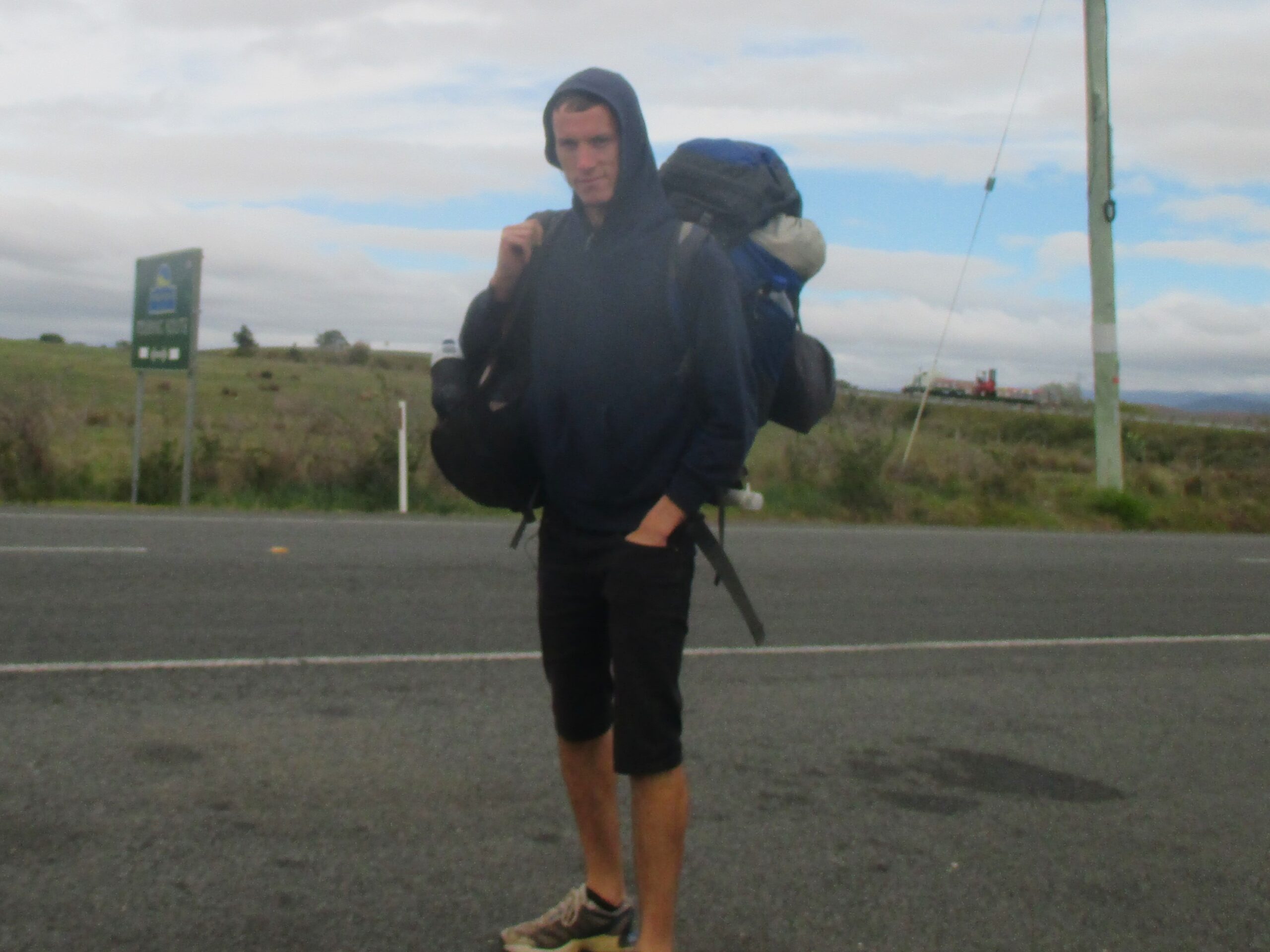
Worrying times
The couple also shared a story of an infamous incident involving a hitchhiker in the area. A few years back, a young female who had been murdered on the east coast of Tasmania – where I was heading to. They made it clear to me that the murderer was never caught, just shortly before they dropped me off and wished me good luck. I took the photo above in case it was my last.
I made it to the coast via several short rides. I had to endure a short burst of rain between two rides, and although it wasn’t heavy, rain can put a very real dampener on hitchhiking. My time in Australia so far took me to some of the hottest and driest parts of the world, so I was now grateful for cooler temperatures, and tolerated a bit of wet weather.

Bay of Fires
The most striking feature of the Bay of Fires, I imagine, inspired its name – the red colouration of the rocks along its coast. I had a gentle walk along the bay before finding a secluded area; a small-wooded area between the sand and the road. I think I was on heightened alert from the story I heard earlier in the day, when the sound of movement outside sent my mind into paranoia. I told myself the noises must have been the doing of a kangaroo or wallaby hopping around nearby, in order to get some sleep.
The following morning, I did happen to meet an unexpected visitor, but they came in from the sea. I watched from the entrance of my tent as a single penguin, fresh from a morning swim, walked in rather gingerly up the beach, before making itself comfortable on the sand just a few metres away from me. I was amazed and captivated to have a neighbour, and I enjoyed its company while I served myself breakfast on the beach.
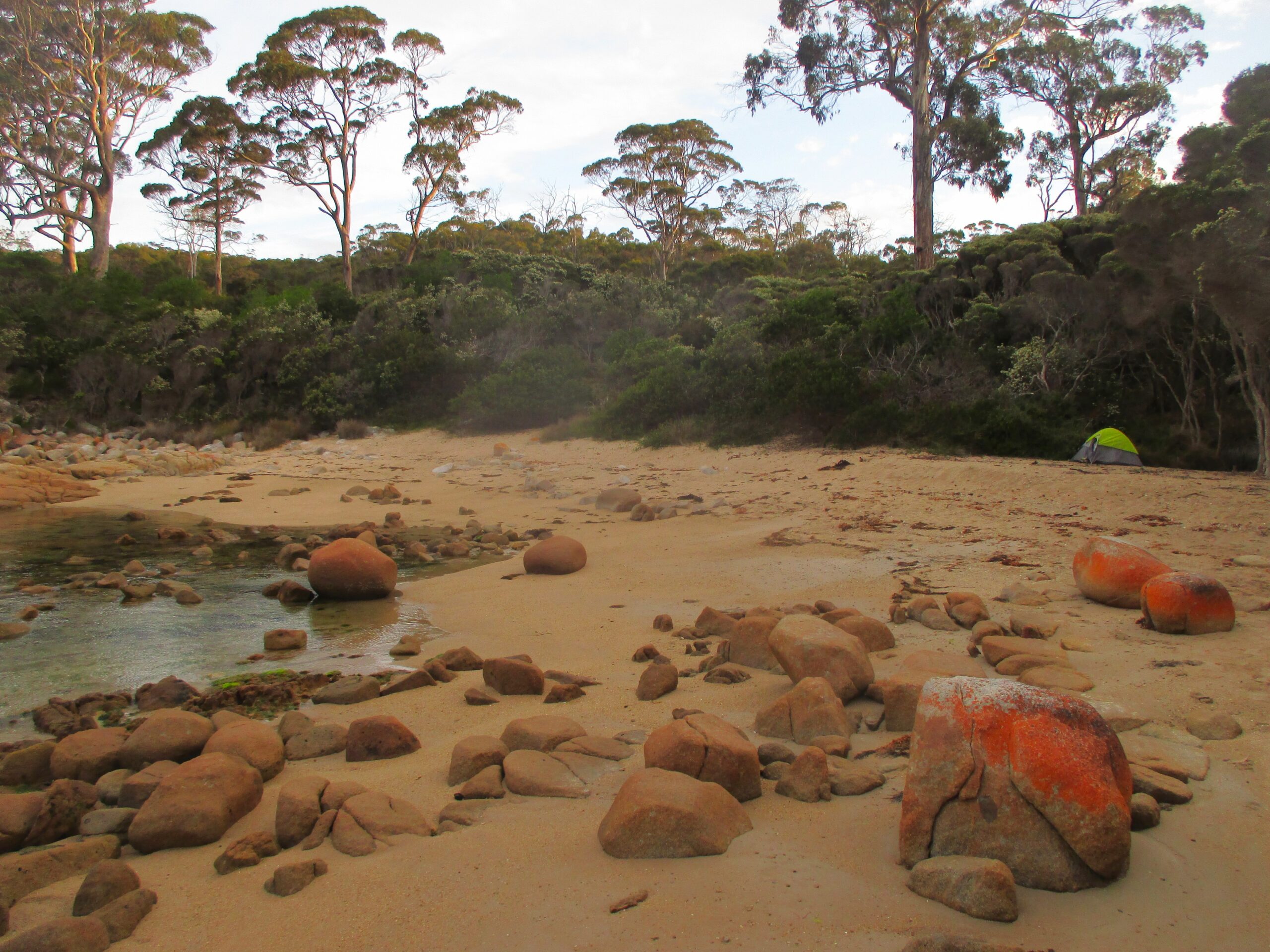
A local tour guide
Later, I met a local, Dave, who told me the penguin had appeared in the area around three weeks prior and he’d been keeping an eye on him ever since. I believe it was a yellow-eyed penguin, which are supposed to be endemic to New Zealand. I was concerned it was alone and, conversely, uplifted to know it was surviving here. The penguin had a noticeable injury to his foot, although it didn’t seem to affect his swimming, nor its ability to walk.
I then spent the rest of the morning with Dave, who kindly offered me a tour of the coast, to see more of the bays further north, before driving me to a point back in town where I could hitch a ride onwards.
